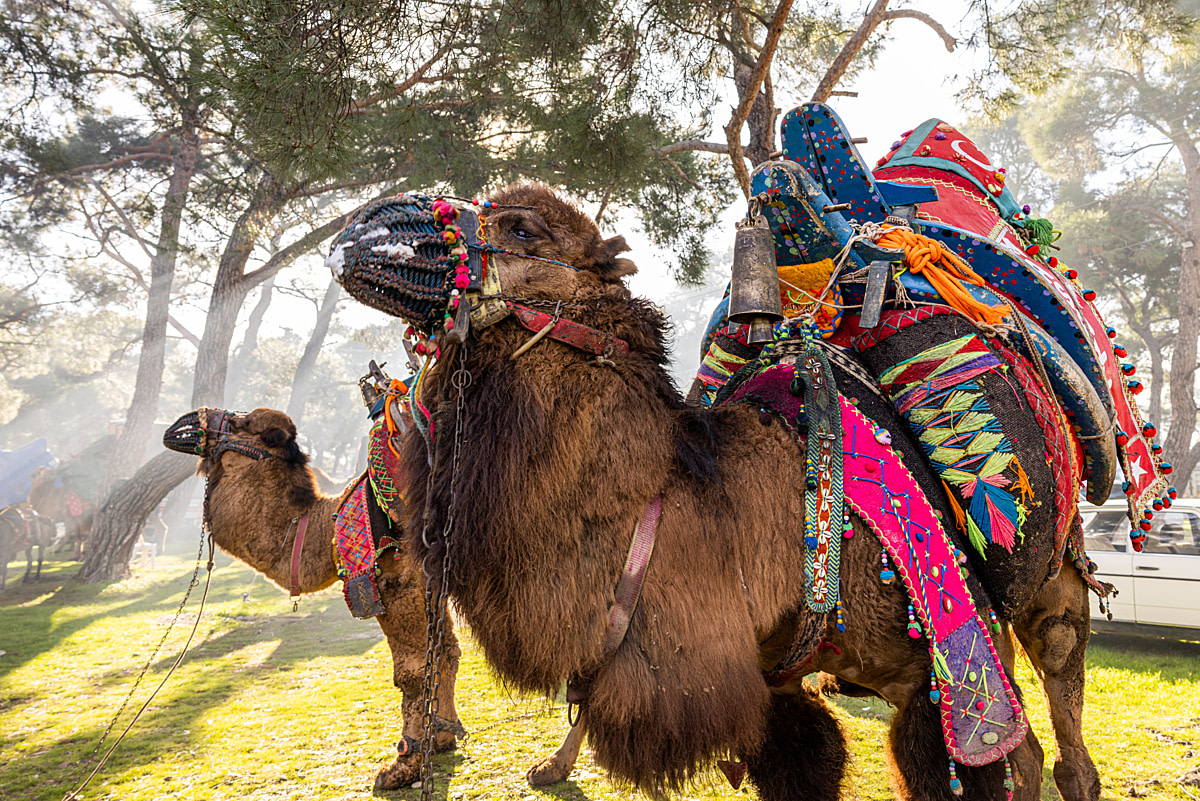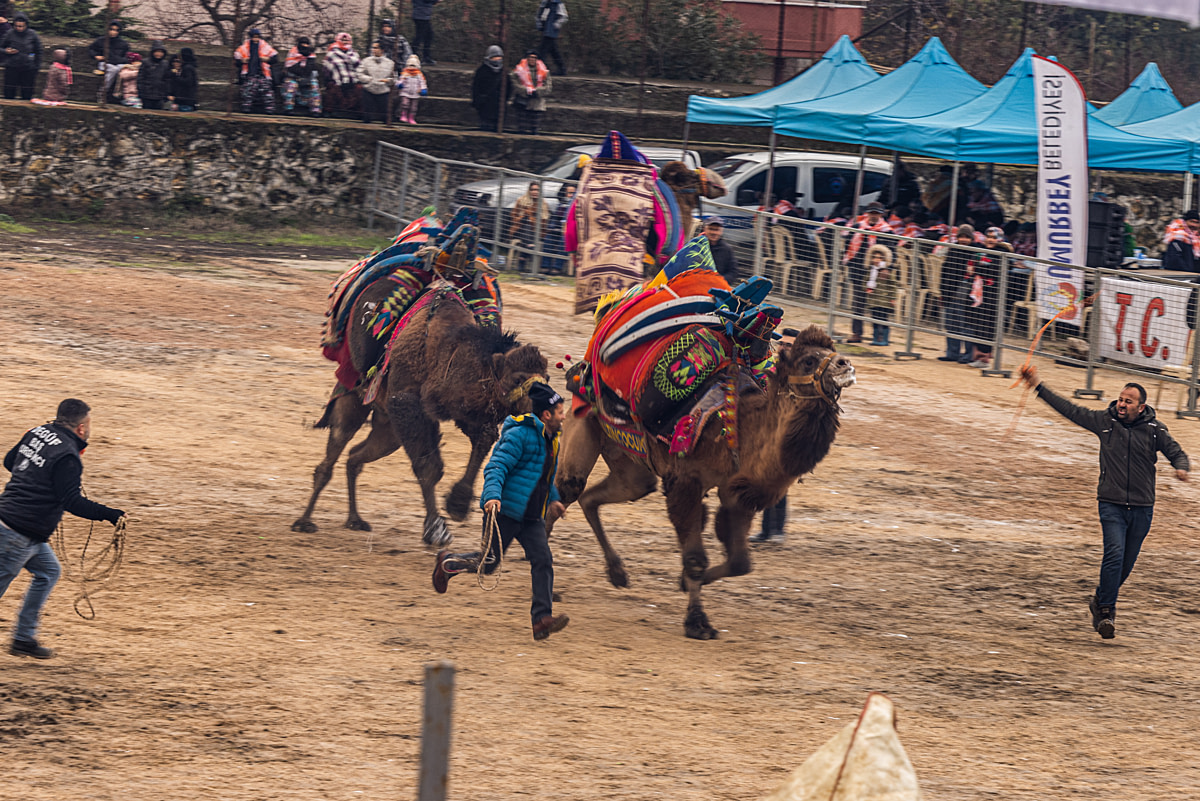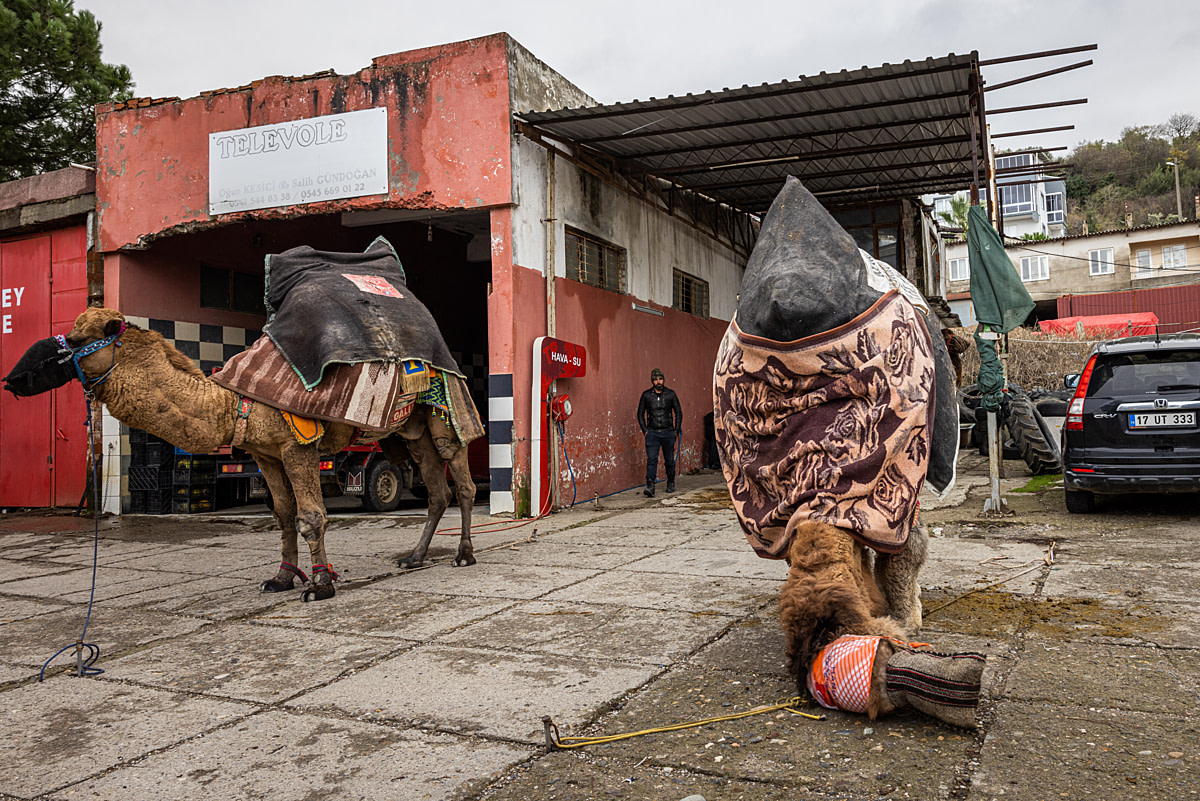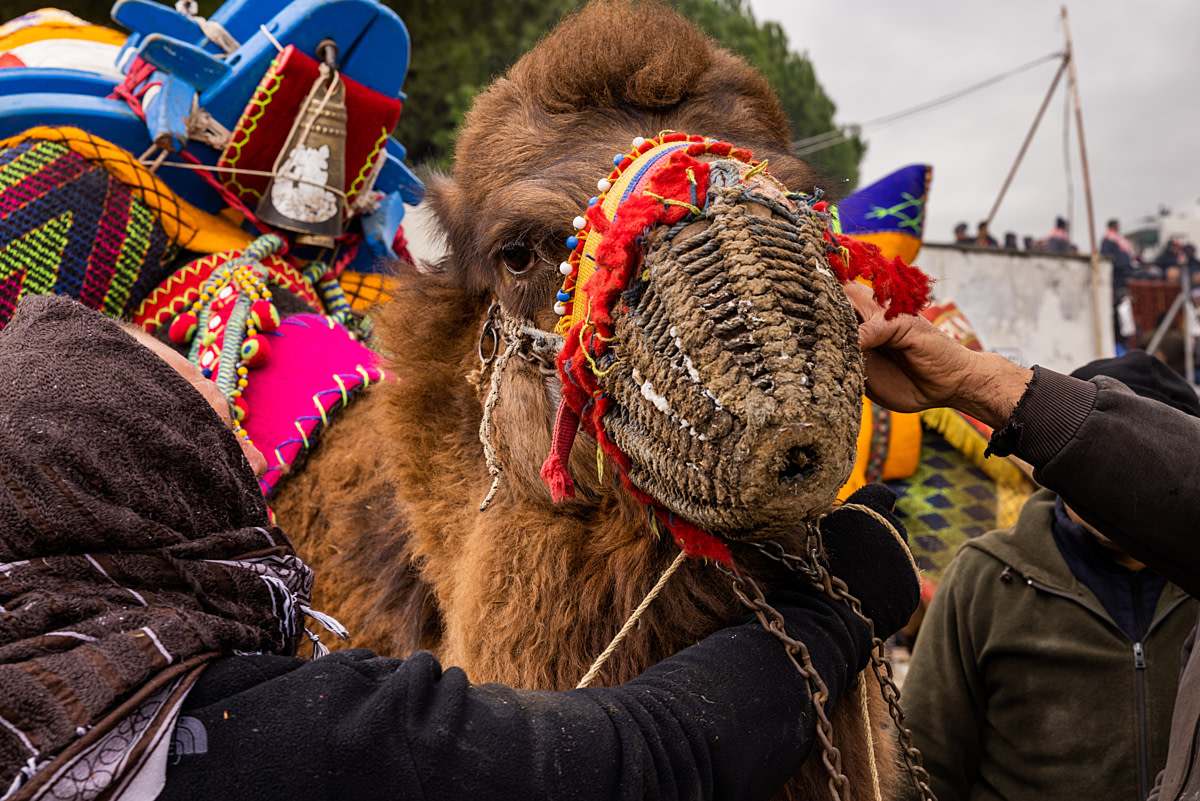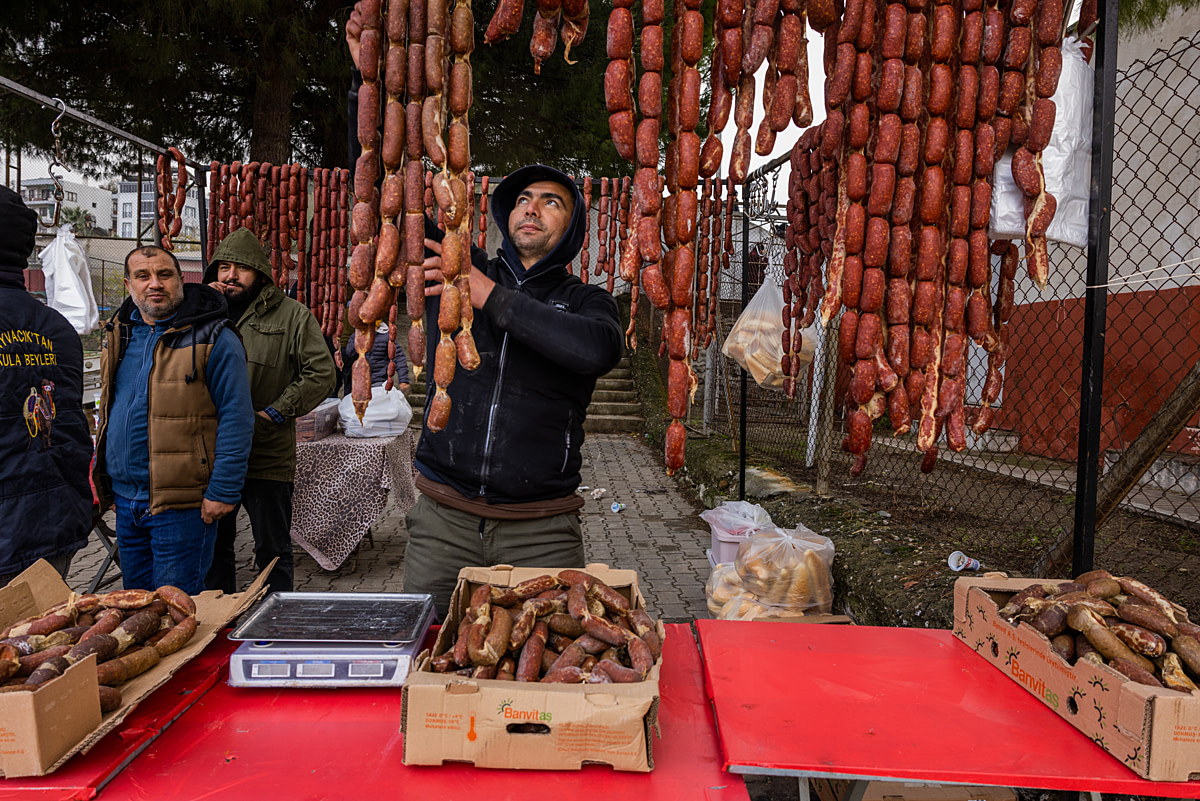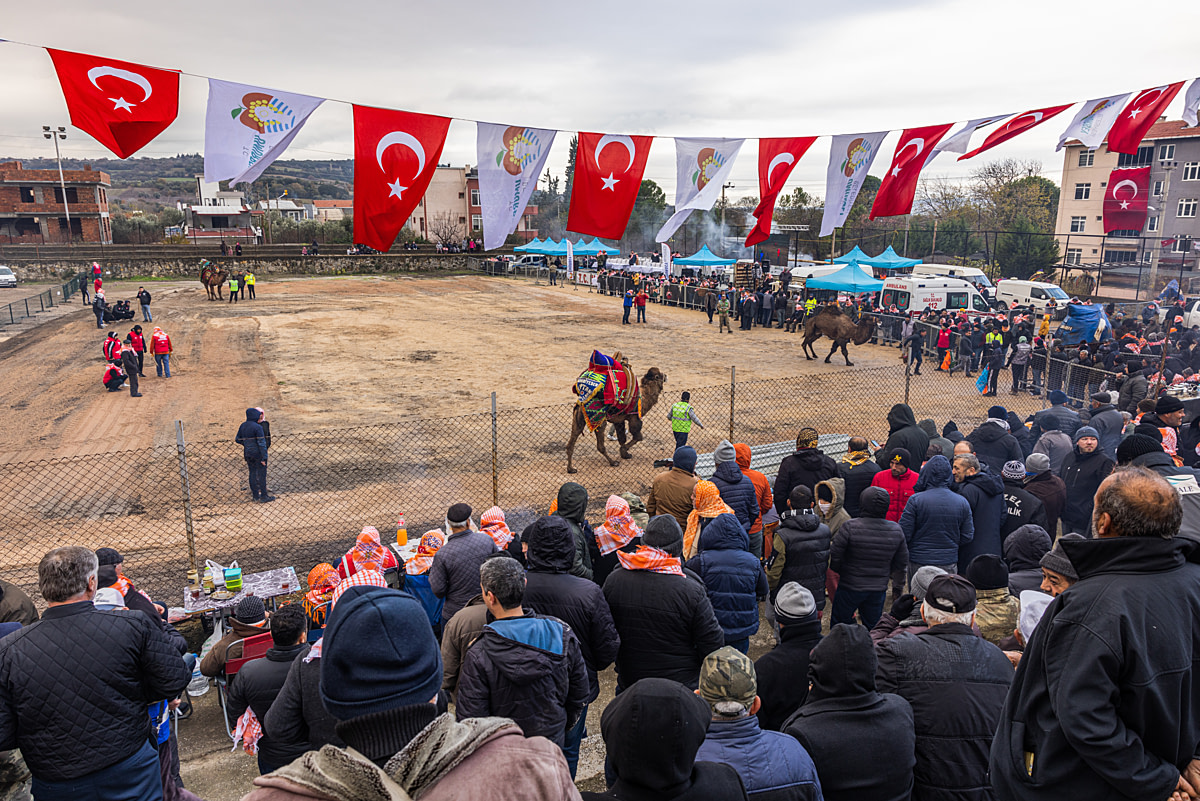Two bull camels pitted in a wrestling competition are pushed at their necks and pulled with ropes by three groups of men. Canakkale Province, Turkiye, 2023.
Jane Mar / We Animals
In December 2023, We Animals photojournalist Jane Mar bore witness to and documented the tradition of camel wrestling in Türkiye — where male camels, typically during mating season, are forced to wrestle for human spectacle.
“People come to watch camel wrestling with their children here. The situation, therefore, becomes normal for children. In fact, according to one of the camel owners I spoke to, camels are often bought as gifts for grandchildren — a grandfather bought a camel for his five-year-old grandson. Unfortunately, animal exploitation is normalized and transferred from generation to generation in this way.” ― Jane Mar, animal photojournalist
Photographer and videographer: Jane Mar
At a camel wrestling event, two bull camels foam at their mouths while tussling in the ring. To coerce the animals into fighting, men use ropes or their hands to slap the animals or force them toward one another. One of the camels resists, but the men force him to re-engage with the other animal. Canakkale Province, Turkiye, 2023.
Jane Mar / We Animals
The wrestling of bull camels in rut is a 2,400-year-old Turkish cultural tradition popular in the country’s western provinces. Typically, these animals are housed on a family’s farm and transported to wrestling festivals in various cities. Occurring from November to March, these festivals can attract thousands of people, including tourists, and the events purportedly receive political support.
A muzzled bull camel stands chained and hobbled by his feet in a holding area at a camel wrestling festival. Even while waiting to compete, the camels continue wearing the colourful, patterned, beaded competition fabrics that feature his name and are specially created for the event. Canakkale Province, Turkiye, 2023.
Jane Mar / We Animals
“Before the fight, the camels are kept with a mouthpiece in their mouth and a chain around their pasterns. They wait for hours, almost unable to move, as they are fixed to the ground with two ropes extending from their head and legs. Some camels make repetitive movements due to stress.” ― Jane Mar
A bull camel’s leg is pulled with ropes and hit with sticks by handlers who want him to sit on the ground at a camel wrestling event. Chains and hobbles restrain the muzzled bull camels who are tied up in this streetside holding area. Canakkale Province, Turkiye, 2023.
Jane Mar / We Animals
During competitions, camels awaiting their turn wear muzzles, hobbles and brightly coloured cloth. The animals are paraded in and out of the ring, dolled up in regalia; their saddles note their names, origins, and trainers or “owners.” Bull camels are not always naturally combative without stimuli. Our photojournalist witnessed camels facing harsh human interventions if they did not engage in fighting, including tugging and striking the animals to provoke aggression and entertain festival attendees, activities that are visible in the video footage that was captured. Some members of the audience ate camel meat sausages as their entertainment snack of choice.
A bull camel used for wrestling attempts to flee the competition ring, suddenly running toward the exit during a camel wrestling festival. As his opponent follows suit, men run alongside him to prevent him from running towards the crowd. Canakkale Province, Turkiye, 2023.
Jane Mar / We Animals
A camel “wins” by making his opponent scream, fall or retreat. Points are awarded for a camel’s moves, and the owners of the winning animal receive a trophy and cash prize. Historically, “owners” of winning camels have received up to $20,000 USD in prize money.
Outside the ring, camels are restrained and kept closely together, exacerbating the male’s mouth-foaming, which occurs during the rut. Throughout the day, our photojournalist observed stressed animals, evidenced by their foaming mouths, and many animals were engaging in repetitive movements.
A camel kneels and rubs their head on the concrete ground while chained in a holding area at a camel wrestling festival. Camels enjoy taking dust baths as part of their daily behaviour. However, no dirt or sand is present on the paved ground. Canakkale Province, Turkiye, 2023.
Jane Mar / We Animals
In this region of Türkiye, camel meat sausage is commonly consumed, and camels that consistently lose matches over time are sent to slaughter.
A muzzled and blanketed bull camel stands in a streetside holding area at a camel wrestling festival while his owner points and tries to get him to look at the camera. Canakkale Province, Turkiye, 2023.
Jane Mar / We Animals
Bull camels attired in layers of elaborate fabrics are lead around the competition ring at a camel wrestling festival while spectators consume camel sausages and drink raki in the stands. The camels were transported from various villages, towns and cities to the region. Canakkale Province, Turkiye, 2023.
Jane Mar / We Animals
The tireless work of We Animals’ photojournalists exposes the exploitation animals endure around the globe, whether they are being farmed for food or forced to fight for human spectacle.
Photographer and videographer: Jane Mar
Data sources: Eurasianet / Hurriyet Daily News / Daily Sabah / ResearchGate / Traditional Sports
Explore and download visuals from this assignment via our stock platform and help tell these underreported stories.



